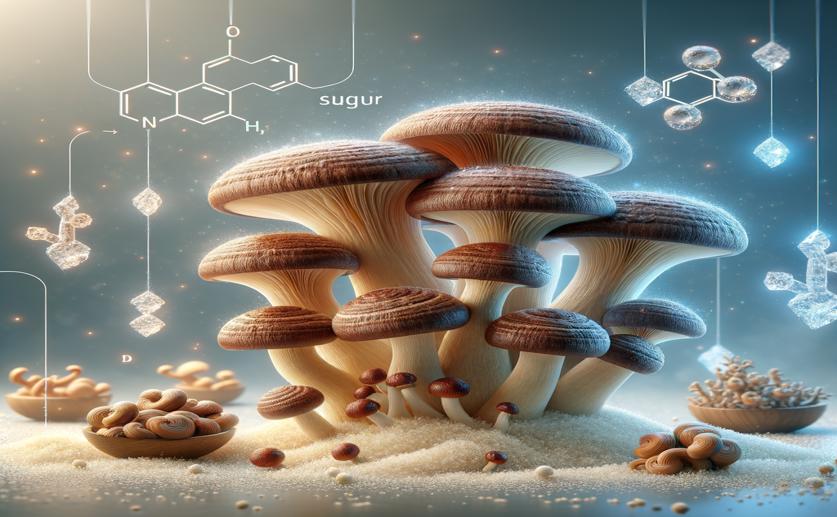
How a Key Enzyme Influences Growth and Sugar Production in Reishi Mushrooms
Greg Howard
22nd July, 2024

Image Source: Natural Science News, 2024
Key Findings
- The study from Jiangnan University, China, explored the role of α-1,3-glucosyltransferase (GLAGT) in Ganoderma lucidum
- Overexpressing the glagt gene reduced fungal growth by up to 79.61% and decreased cell-wall thickness by 32.44%
- Despite reduced growth, overexpression increased intracellular and extracellular polysaccharides by 27.58% and 66.08%, respectively
References
Main Study
1) Roles of α-1,3-glucosyltransferase in growth and polysaccharides biosynthesis of Ganoderma lucidum.
Published 19th July, 2024
https://doi.org/10.1016/j.ijbiomac.2024.134031
Related Studies
2) Molecular mechanisms of bioactive polysaccharides from Ganoderma lucidum (Lingzhi), a review.
3) Biochemical and structural characterization of a glucan synthase GFGLS2 from edible fungus Grifola frondosa to synthesize β-1, 3-glucan.
4) Recent insights into glucans biosynthesis and engineering strategies in edible fungi.
5) Chemical features of Ganoderma polysaccharides with antioxidant, antitumor and antimicrobial activities.



 6th July, 2024 | Jenn Hoskins
6th July, 2024 | Jenn Hoskins